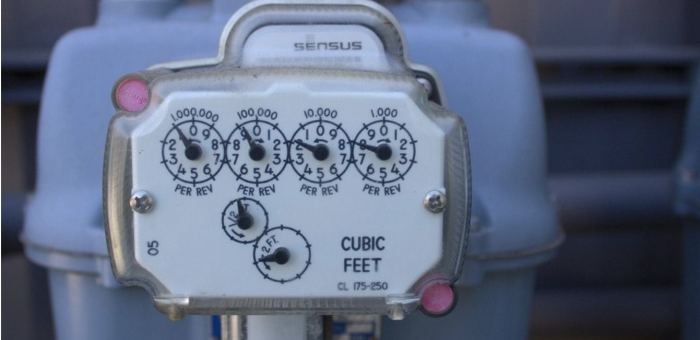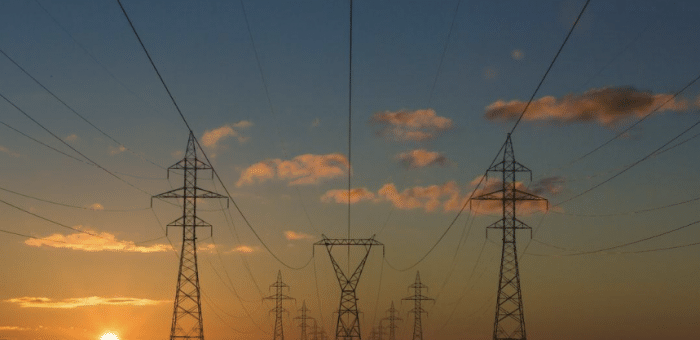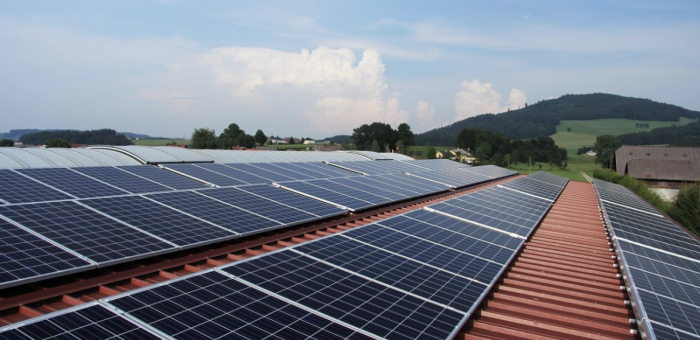This short guide shares when energy rates are the lowest and explain how to shop for the best electricity plan for your usage needs.
Click on a section to skip directly to it:
The Supply And Demand Of Energy Rates
Supply and demand are the cornerstones of a capitalist economy.
The Library of Economics and Liberty explains supply as “the quantity of a good supply rises as the market price rises and falls as the price falls.” Demand is explained as “the quantity of a good demand falls as the price rises and vice versa.”
In simple terms, as the demand for a resource increases, so does the production and the price. As the demand falls, the production and price fall along with it.
What do supply and demand have to do with electricity?
The consumption of energy drives up the cost of electricity. The more energy used (demand), the more energy needs to be generated (supply).
The United States uses nearly 4 trillion kilowatt-hours (kWh) of electricity per year, totaling a whopping $350 billion in retail sales.
The usage of energy continues to grow as we have more and more things that require electricity- cell phones, homes, businesses, laptops, and even cars.
Electricity prices reflect the cost to build, financing, maintenance, and operating power plants and the electricity grid.
As the consumption of energy increases, so does the need to generate more energy.
Here are the factors that affect supply and demand, which in turn affect electricity rates:
- Fuel: Higher electricity demand and other factors like fuel supply disruptions can increase the cost of fuel. The increased cost of fuel then results in raises in electricity rates.
- Power Plants: As the demand for electricity rises, more power plants are needed to generate energy in order to keep up. The cost of building, operating, and maintaining these plants is passed along to consumers via their electricity bills.
- Weather conditions. Extreme temperatures can increase the demand of heating and cooling which both require electricity.
So how can you save money on your electricity bill if you have no control over supply and demand?
What Time You Use Energy
Electricity rates vary throughout daytime and nighttime hours.
In fact, rates can change every 15 minutes.
Why does “time of day” matter when it comes to energy usage?
This goes back to supply and demand. The more energy being used, the more energy has to be generated.
Typically more energy is consumed in the early morning hours between 5:00 am-7:00 am and at night between 5:30 pm-7:30 pm.
These are the average hours that many people are home being productive- cooking, cleaning, eating.
Think about this: Running a dishwasher uses approximately 1.5 kWh for a one-hour cycle. If your electricity rate is 10.0¢ per kWh, it will cost 15.0¢ to run your dishwasher each day.
If there are 20 houses on your street and each household uses their dishwasher at 6:00 pm, the total electricity usage is 30 kWh.
What if everyone in your neighborhood, in your town, and in your state uses their dishwasher at the same time of day?
If every person in the entire state of Texas uses their dishwasher at 6:00 pm, that means 29 million people are using a whopping 43,500,000 kWh, totaling $4,350,000 (if each person has the same rate as you do).
That is a ton of electricity.
Retail Electric Providers (REP) are companies that purchase energy from power generators and then sell the energy to you.
In order to maintain a reasonable balance between supply and demand, REPs charge more per kWh during peak hours.
Keep reading to learn how peak and off-peak electricity hours affect your electricity bill.

Peak Electricity Hours
Peak electricity hours are hours when energy usage is at its highest… the times of day in which more people use more electricity.
Peak electricity hours are generally between 7:00 am and 10:00 pm.
That makes sense, right? Peak electricity hours are when the majority of the public is awake and consuming energy.
Look closely at your electricity bill. You may notice your energy usage is billed in different tiers. These tiers could be described as peak hours and off-peak electricity hours or time of use hours.
Tier billing is done for two reasons:
- To encourage customers to use less energy during peak electricity hours.
- To keep up with supply and demand, REPs charge more since it costs more to generate and distribute energy during these times.
Does Electricity Cost More During Peak Hours?
You want to know when electricity is most expensive.
Electricity is the most expensive during peak hours.
In some cases, a REP will charge double or triple the rate per kWh for peak hours versus non-peak hour rates.
Off-Peak Electricity Hours
You want to know when electricity is cheapest.
The cheapest time of day to use electricity is late nights and early mornings.
These are the times of day when most people are sleeping, therefore not washing clothes or dishes. They are not watching TV and don’t have many lights on throughout the house.
Because the demand for energy is lower at night, the cost of electricity is also lower. It is nighttime and the cheapest time to use energy.
You don’t want to spend your nights washing clothes, vacuuming the floors, or running the dishwasher.
Saving money on energy at night does not mean you have to give up your beauty rest.
Set a delay on your dishwasher, so it begins after 10:00 pm.
Throw a load of clothes in the washing machine before you hit the pillow. Then next morning, switch the load to the dryer before beginning your day.
Discover the best electricity rates.
Power Wizard finds you the best electricity plan and ensures you won’t overpay for electricity again.
Learn More in Under 2 MinsMaking a few small changes can add up to $ 100’s in savings.

Seasonal Trends Of Demand
Texans are preparing to say farewell to winter and hello to spring.
This means pleasant days and cool nights. Open windows and refreshing breezes.
Spring is a time when energy consumption is lower. This is due in part because furnaces are not being used as much and air conditioner units haven’t been turned on yet.
Spring is a marvelous season in Texas, but it is a very short season.
Summers in Texas are hot and humid. They can be downright brutal, with temperatures surpassing the 100-degree mark and humidity maxing out at 100%.
As seasons change, so does the demand for energy.
Energy Demand In Summer
A megawatt measures the amount of energy a power plant produces.
One megawatt-hour is equal to 1,000 kWh, which is equal to one hour of electricity usage.
One megawatt-hour can power about 1,000 U.S. homes during non-peak periods. These are times when energy usage is lower such as nights, weekends, spring, and fall.
But during peak periods of demand, such as summer and daytime hours, one megawatt can only power 200 homes.
This difference in the power supply is reflected in average electricity bills.
In Texas, the average electricity bill in the summer is nearly $140.00 a month versus $70.00 a month in the wintertime.
Energy Demand In Winter
If energy rates are higher during the summer due to demand, are they lower in the winter?
Yes and no.
The demand for electricity in the winter is not quite as low as you would think.
Even though Texas experiences milder winters than most of the country, the majority of Texas homes have heaters. Half of the heaters in Texas homes are powered by electricity.
This number is higher than the US average. The average US home, outside of Texas, primarily uses gas-powered furnaces to heat homes.
Texas households consume an average of 77 million Btu per year, 26% higher than the national average.
Discover the best electricity rates.
Power Wizard finds you the best electricity plan and ensures you won’t overpay for electricity again.
Learn More in Under 2 MinsAnnual electricity cost in Texas averages $1801, one of the highest in the nation.
Texans use a lot of electricity.
When Are Energy Prices The Lowest?
We have talked about supply and demand and how they affect electricity costs, but what you really want to know is, “When is electricity the cheapest?”
Are rates lower during off peak electricity hours?
Yes, energy prices are lowest when the demand for electricity is low.
The cheapest times to use electricity are during off peak electricity hours.
Off peak electricity hours vary a little between Retail Electric Providers or REPs but generally range from 10:00 pm-5:00 am.
Cheap Rate Electricity Hours
You search the internet for the cheapest electricity rate.
The search result page is flooded with companies promising the lowest rate, the cheapest rate, and the best rate.
With so many choices, how do you know which plan is the best?
The best plan for you is not always the cheapest plan.
How is this possible?
Your goal is to save money, so the cheapest electricity plan should be the best one for you, right?
The cheapest energy rate usually comes with:
- Hidden fees
- Additional charges
- Lengthy contracts
- Complicated terms of service agreement
Consider this:
You choose a plan from ABC Energy with a rate of 9.0¢ per kWh. This rate is lower than the state average.
This plan requires a 24-month contract, a minimum monthly usage of 2000 kWh, and a $400.00 early termination fee.
The average Texas home uses 1200-1500 kWh monthly. But you are not average. Your energy consumption is 1000 kWh each month.
Since your energy consumption is below the minimum required 2000 kWh per month, your rate jumps from 9.0¢ per kWh to 15.0¢ per kWh.
After 12 months of being penalized for not using enough energy each month, you decide to cancel your current plan, which costs you $400.00.
When searching for an electricity plan, instead of focusing on the cheapest plan, you should be looking for the best plan for your unique energy needs.
What Time Do Electric Rates Go Down?
You want to know what time electric rates go down.
Off peak electricity hours are set by retail electric providers, but on average they range from 10:00 pm to 5:00 am.
These are times when less energy is being used, so there is less stress on the energy grid.
With a quick call to your current REP, you can find which hours they consider to be non-peak hours.
Concentrating the bulk of your electricity usage on non-peak hours will save energy and ultimately help you save money.
Location, Location, Location
You have heard location matters when searching for homes, but did you know location is a huge factor when choosing an electricity plan?
What does location have to do with cheap electricity rates?
In Texas, electricity has been deregulated since 2002. Deregulation has created a competitive electricity market in the Lone Star state.
Nearly 85% of the state has an open electricity market. If you live in an area where electricity is deregulated, you can capitalize on savings because of competing Retail Electric Providers.
There are a few cities in Texas that do not have deregulated energy:
- San Antonio
- Austin
- Lubbock
- El Paso
- Amarillo
- A few other small towns
One other way location affects energy rates is the availability of power plants and fuel in or near a location.
For example…
Hawaii’s average electricity rate is 29.22 per kWh compared to Louisiana’s rate of 7.65¢ per kWh.
Discover the best electricity rates.
Power Wizard finds you the best electricity plan and ensures you won’t overpay for electricity again.
Learn More in Under 2 MinsThis wide range of rates is because power plants and fuel are more accessible in Louisiana than they are in Hawaii.

Can I Change My Habits To Lower My Rate To Capitalize When Energy Rates Are The Lowest?
You consider yourself environmentally friendly.
You recycle; bring your own bags to stores (most of the time). You use metal straws and pledged to only use a reusable water bottle.
Applying environmentally friendly techniques to your electricity usage not only helps the planet, but also can lower energy bills.
Here are a few habits you can change in order to capitalize on cheap electricity times:
Turn off lights and appliances when not in use
There is no reason lights should be on in an empty room. The same goes for TVs, radios, and ceiling fans. Remember to flip the switch off when leaving a room.
Replace light bulbs
Light bulbs have evolved a lot over the years. Traditional light bulbs, also known as incandescent light bulbs, use an extremely high amount of electricity, roughly 60 kWh. They also require constant replacement.
LED light bulbs use about 8.5 kWh and have a lifespan of 25,000 hours.
Use a Smart and/or Programmable Thermostat
Everything is “smart” these days – cars, speakers, phones, and thermostats. A smart thermostat allows you to adjust the temperature in your home through an app on your cell phone.
Programmable thermostats help you to capitalize on savings by automatically adjusting the temperature in your home based on peak and off peak electricity hours.
Replace Outdated Appliances and Heating/Cooling Units
Appliances and Heating/AC units built today are far more energy-efficient than those built 20 years ago.
A refrigerator purchased in 2020 is 40-60% more energy efficient than one purchased in 2000.
A front-load washing machine uses 37% less energy than an older model top loader.
These are great ways to save money, but they have upfront costs.
You can save money for FREE by incorporating these habits into your routine:
- Turn the dishwasher on right before you go to bed
- Wash a load of clothes first thing in the morning
- Complete household chores such as vacuuming on the weekends
Buying new light bulbs, adjusting your energy usage habits, and replacing old appliances are all ways to save money on your energy bill.
More From the Power Wizard Blog
-
Affordable Electric Bill: Power Wizard’s Promise of Protection
Sarah, a proud Texan, knows that everything is bigger in Texas – including the choices when it comes to electricity providers. She’s no stranger to the complexities of deregulated energy markets. With a bustling household, she juggles work, family, and keeping the lights on. But there’s one thing Sarah doesn’t want to juggle: her electric bill. […]
View Article -
Vampire Energy: How Phantom Power Drains Your Wallet and the Environment
Imagine your home filled with silent energy sippers, lurking in the shadows, unnoticed yet constantly draining power and your wallet. Vampire energy, or phantom load, refers to the electricity electronic devices consume, even when turned off or in standby mode. These energy vampires are prevalent in every household and workplace, from the charger left plugged […]
View Article -
The Top Sources of Carbon Emissions in the U.S.
Climate change due to rising global temperature seriously threatens the natural ecosystem. It can result in erratic weather featuring intense drought, heat waves, melting ice caps, warming oceans, and increased storms when left unchecked. As the impact of climate change worsens, the risk of biodiversity loss and human extinction gets bigger. Table of Contents What […]
View Article -
California Solar Tax Credit & Incentives for Residential Rooftop Solar
Are you considering investing in residential solar panels in California? You’re not the only one. Research shows that California was ranked number one out of 50 states in 2022 for solar power generation, with more than 11 million homes powered by the sun. A major reason why solar power is popular statewide is that prices have dropped […]
View Article -
What Should You Include in an Energy Efficiency Audit?
Rising energy costs mean higher electricity bills, and for the average homeowner or business, a little savings each month can add up to extra cash at the end of the year. If you’re looking for ways to reduce your home’s energy consumption, performing a home energy audit is a great place to start. Table of […]
View Article -
How to Cancel Your Electricity Contract with Your Provider
There are many advantages to changing your electrical service, including finding a better price, switching to a company with better customer service, and finding a distributor with a green appeal. It’s easiest to end your service when a contract ends, but sometimes it makes sense to switch early. For instance, you may find that you’re […]
View Article -
How to clean your solar panels
Click on a section to skip directly to it: Why is it important to clean your solar panels?Solar panel cleaning: a step-by-step breakdownMake sure you’re saving the most on your monthly energy bill Have you considered installing a renewable energy source at your home? Power Wizard recommends trying solar energy, which accounts for 3% of […]
View Article -
How to Reduce Your Carbon Emissions
Click on a section to skip directly to it: Why is it necessary to lower carbon emissions?Steps to take to minimize your carbon emissionsReduce your carbon emissions with carbon offsets Carbon emissions refer to the measure of the impact of human activities on global warming and climate change. Every person on the planet contributes, directly […]
View Article













